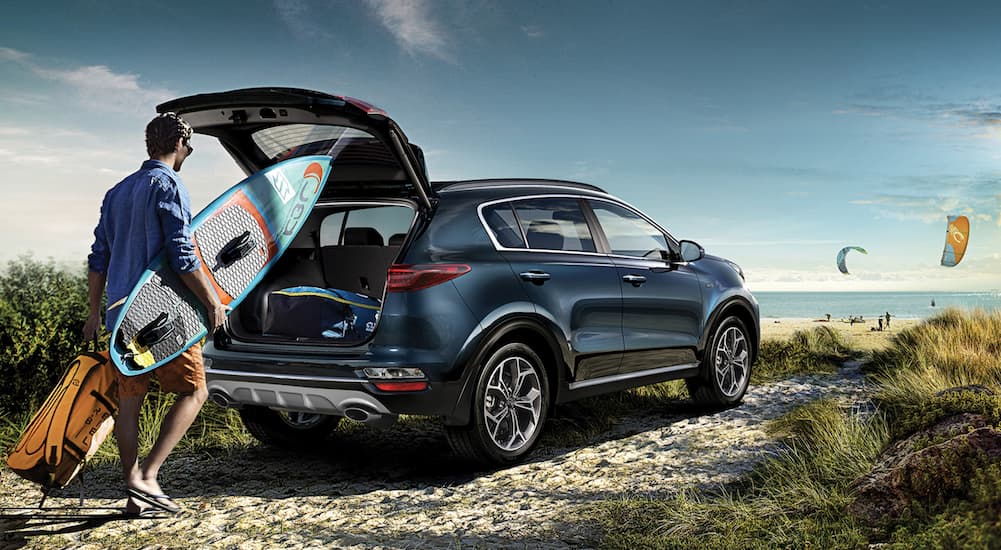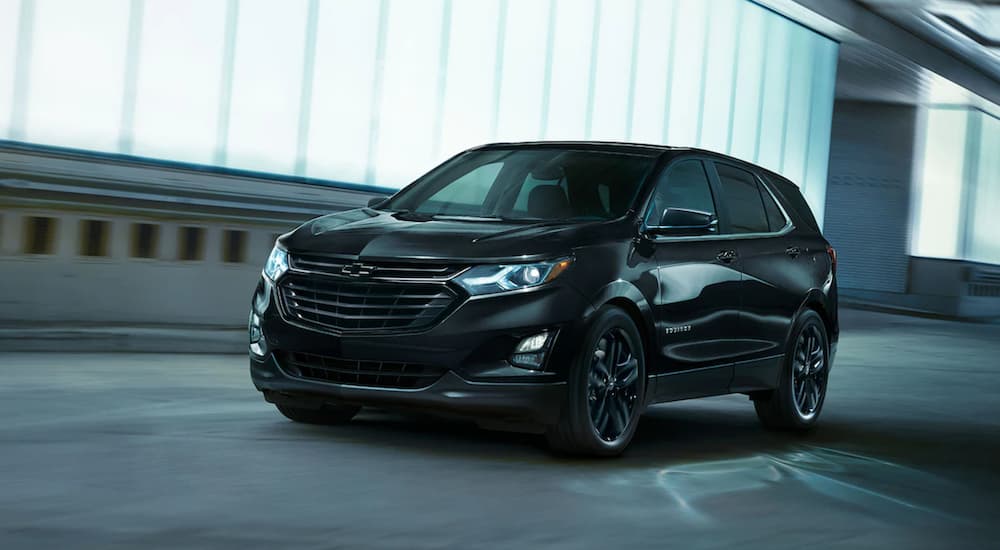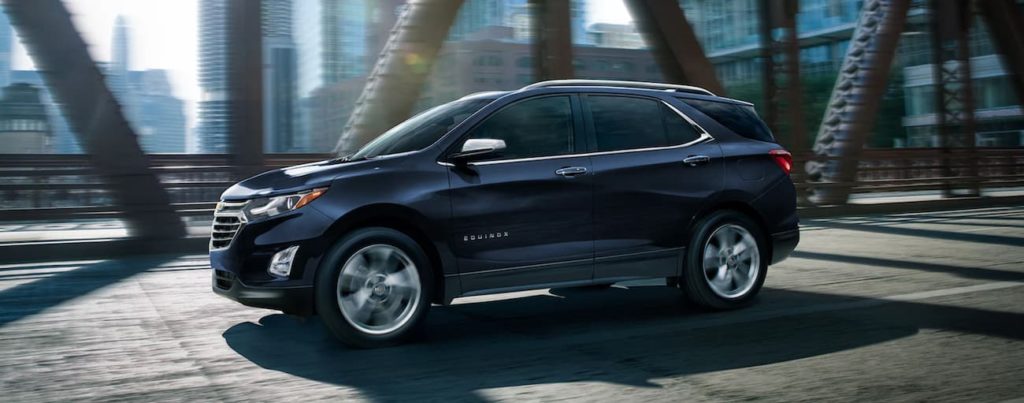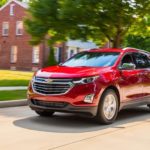For over 100 years in the U.S. automobile industry, the car was king. From a classic sedan with a big front bench seat and equally big chrome taillights to sportscars, you have to fold yourself into before going 0 – 60 in a handful of seconds. In 2015, however, SUVs became the new champion in auto sales, and just four years later, they outsold cars two to one. Crossovers, smaller SUVs that are usually built on a car platform instead of a pickup-style frame, currently make up about 40% of all auto sales. With all the options currently flooding the market, how do you know which one to pick? For the sake of narrowing things down, we’ll just compare two very similar variations: the 2021 Chevy Equinox vs 2021 Kia Sportage.
The Chevy Equinox isn’t just one of the country’s best-selling crossovers in the best-selling market segment – it’s in the top three. Sales in 2020 were just shy – six short, to be exact – of 271,000. In comparison, there were only 84,343 Kia Sportages sold in 2020. Now, of course, popularity doesn’t always mean something is the best (looking at you, pineapple-on-pizza people), but you can’t deny that with those sales figures, Chevy is doing something right with the Equinox. Let’s look at the history of these complementary carriages, how much they’re now alike, and where they differ.
The Histories of the Equinox
The Equinox joined the Chevrolet family for the 2005 model year. Originally, it was a slightly larger “midsize” SUV with a wheelbase five inches longer than the current model. The original Equinox was built at a Canadian plant and came standard with a 3.4-liter V6 engine. For the 2008 model year, a 3.6-liter V6 was introduced as an alternative. This larger engine on the sportier trims led to a 0-60 time of under seven seconds.
The 2010 model year brought a generational change to the Equinox. Manufactured in Towanda, New York and Spring Hill, Tennessee, this model had a standard 2.4-liter I4 engine with a 3.0-liter V6 option. By this point, five years into its creation, the Equinox was obviously speaking to buyers, as it became Chevrolet’s third best-selling vehicle, falling right in line with the Silverado pickup and compact Cruze sedan. A 3.6-liter V6 was introduced as an option for the 2013 model year with 14% more horsepower and 23% more torque than the 3.0-liter option. A DVD player and safety options that included lane departure warning and park assist debuted this year, as well.
2016 brought the third generation of Equinox. The engines were a 1.5-liter turbocharged 4-cylinder, a 2.0-liter turbocharged 4-cylinder, and a 1.6-liter turbo-diesel. A whole host of safety features arrived this year, including a surround-view camera, forward collision warning, and a safety alert seat, on top of the usual audio and visual cues.

The Sportage Story
Kia first introduced the Sportage back in 1993. The original, overseas versions included a three-door soft-top convertible, but it’s been built as a conventional crossover SUV since 2004. Early years of the Sportage had a lot of safety issues, from recalls due to rear wheels falling off to receiving the lowest possible scores from the Australian safety board.
In 2005, the second-generation Sportage came with a 2.0-liter 4-cylinder engine and corrected most of the flaws found in the original vehicle. While it was nothing special to look at, it was this generation that laid the foundation for the modern Sportage. The third generation of Sportage arrived for 2011. There were two 2.0-liter engines, one diesel and one gasoline.
The 2017 model year introduced the third generation of Sportage. Here in the States, the engines included a naturally aspirated 2.4-liter and a 2.0-liter turbo engine. With this generation, the Sportage established itself as a modern compact SUV that could begin to compete with models from more established brands like the Chevy Equinox.
The 2021 Versions
There are a lot of similarities between the current versions of the Chevy Equinox and Kia Sportage. The Equinox is 65.4″ high while the Sportage is an inch shorter. Overall width is even closer, from 72.6″ of the Equinox to 73″ of the Sportage. While there are a variety of differences regarding some interior measures between these two crossovers, you’ll find that both have approximately 30 cubic feet of cargo space behind the rear row of seats – which is what matters when you have passengers and their stuff onboard.
Both the 2021 Chevy Equinox and the 2021 Kia Sportage come in eight different colors across their four trims. In addition, both of these crossovers come standard with front-wheel drive and have all-wheel drive available, along with power-adjustable, heated, and ventilated seats. Apple CarPlay and Android Auto are expected these days and are included in both models. In addition, there are plenty of standard safety features, with both the Equinox and Sportage including lane keeping assist and automatic braking. The upper trim lines of both the Equinox and Sportage come with features including rear cross traffic alert, rear park assist, and lane change alert with side blind zone alert. Owners of both vehicles report steady reliability.
The 2021 Differences
To start off, the 2021 Chevy Equinox has a starting price of $23,800, while the 2021 Kia Sportage begins at $24,090. The standard engine on the Equinox is a 1.5-liter turbo that produces 170 horsepower at 5600 RPM and 203 lb-ft of torque at 2500 RPM. The main Sportage engine is a 2.4-liter 4-cylinder with 181 horsepower at 6,000 RPM and 175 lb-ft of torque at 4,000 RPM. What do all those numbers mean? The bottom line is that the Equinox engine is more powerful.
The Equinox is also more fuel-efficient, with an EPA-estimated 26 MPG in the city and 31 on the highway compared to the Sportage’s 23 MPG city and 30 MPG highway. The all-wheel drive models see a greater difference in average estimated fuel economy. The all-wheel drive Equinox clocks in at no less than 27 MPG combined, but the all-wheel drive Sportage is only estimated to get 23 MPG combined.
The Equinox has a wheelbase of 107.3″ and an overall length of 183.1″. The Sportage clocks in at 105.1″ and 176.4″, respectively. This translates to 40″ of front headroom and an equal amount of rear legroom in the Equinox. The Sportage has 39″ of front headroom and rear legroom. You’d be surprised how much an inch of legroom makes when it comes to the comfort of taller passengers or keeping wee ones in their car seats from kicking the driver’s seat. The interior space is much more differentiated when comparing cargo room. The 2021 Equinox has 64 cubic feet of space when the rear seats are folded, compared to 60 cubic feet in the Sportage.
When you’re comparing comfort and technology, the 2021 Chevy Equinox has far more options than the 2021 Kia Sportage, including an upgraded touchscreen and premium audio features. The Equinox also offers Chevy’s Driver Confidence Packages with adaptive cruise control, controlling not just your speed but your distance from the vehicle ahead, and HD surround vision to better see around you when backing out in busy parking lots. Kia’s additional options are much more basic, like cargo nets and USB chargers. Teen Driver technology is also standard on the Equinox but not the Sportage.
At the End of the Day
There are a lot of similarities between the 2021 Chevy Equinox and the 2021 Kia Sportage. From the outside, they are nearly identical. Inside, you’ll see the most difference in the extra rear-seat legroom and in the cargo space when the rear seats are folded in the Equinox. The number of options and perks to make your everyday commute and long-distance road trips more comfortable are much greater in the Equinox. But more importantly than that, the difference in fuel efficiency certainly adds up over time, especially when you consider that the Equinox starts at a lower price than the Sportage. When you compare both these vehicles, you’ll certainly see that despite all they have in common, the 2021 Chevy Equinox is clearly superior.





